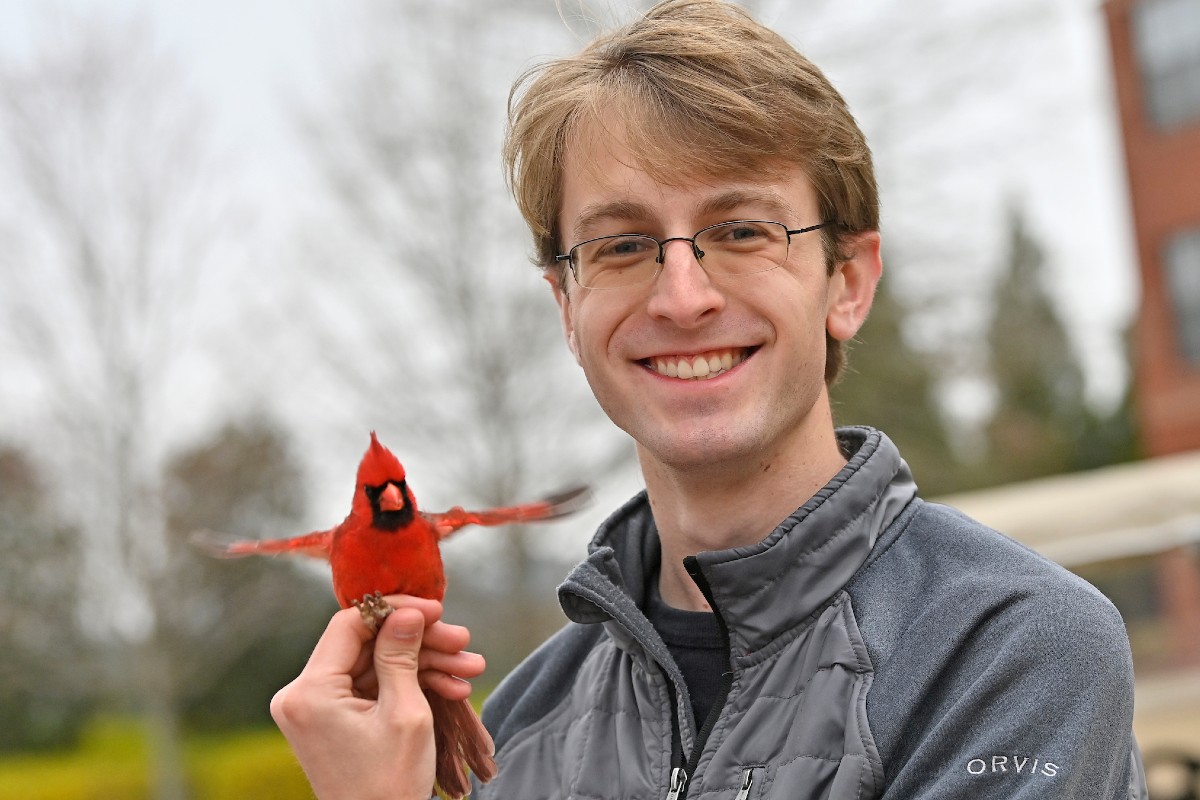By Collin Elder
LAWRENCEVILLE, Ga. | As the human population spreads and forests are urbanized, the result may not be kind to birds, who are crucial to the environment. Three Georgia Gwinnett College (GGC) researchers and their students seek to measure that result.
Dr. Mia Malloy, associate professor of biology at GGC, says: “We started this research project about six years ago. One of the goals was to teach our students how to confidently interact with natural ecosystems and get their feet off concrete, sometimes for the first time.”
Their research focuses on several different species of local birds, and tracks migration patterns, ecosystems and the effects of urbanization on fauna.
The birds they track, most commonly the brown-headed nuthatch, house wren and northern cardinal, are marked in a process called banding. Students take notes while Malloy and her colleagues, Dr. Jill Penn, associate professor of biology and Maria Fernandez, biology instructor, slip harmless, aluminum bands onto the birds’ legs.
If these banded birds are recaptured, bird researchers will see serial numbers on the bands and can enter that information into a national database hosted by the U.S. Bird Banding Laboratory, revealing valuable information like lifespan and migration patterns.
Three Gwinnett County locations used for the research and their degree of urbanization include GGC’s campus, Collins Hill Park and Harbins Park.
Dr. Penn adds: “Bird populations have fallen dramatically since the 1970s, almost by 30 percent. We’re looking to measure how local birds act as indicator species, which the students can then use to figure. The research is important for student growth and gives them real-world experience for their independent research projects.”
While they’re not thriving, bird populations are adapting to their new ecosystems.
Fernandez pointed out: “The general populations seem to tolerate up to 57 percnt urbanized areas well. It’s important to note, however, that more research must be done to look at individual species. It will be interesting to see how biodiversity changes as GGC and the surrounding community grows.”
Fernandez’ work involves stringing up incredibly thin nets, which are hard for birds to see when flying through trees. The birds get trapped in the nets and harmlessly slip into little pouches, where the teams can retrieve and band them safely. Students are given room to look into variations of their own hypotheses dealing with topics ranging from migratory habits to population density and biodiversity in urbanized environments.
Fernandez is happy with how things are progressing: “This is an excellent way for students to get involved with their career paths. More time in the forest means more opportunities for the students to get to know their professors, their fellow students and themselves.”
- Have a comment? Send to: elliott@brack.net










Follow Us